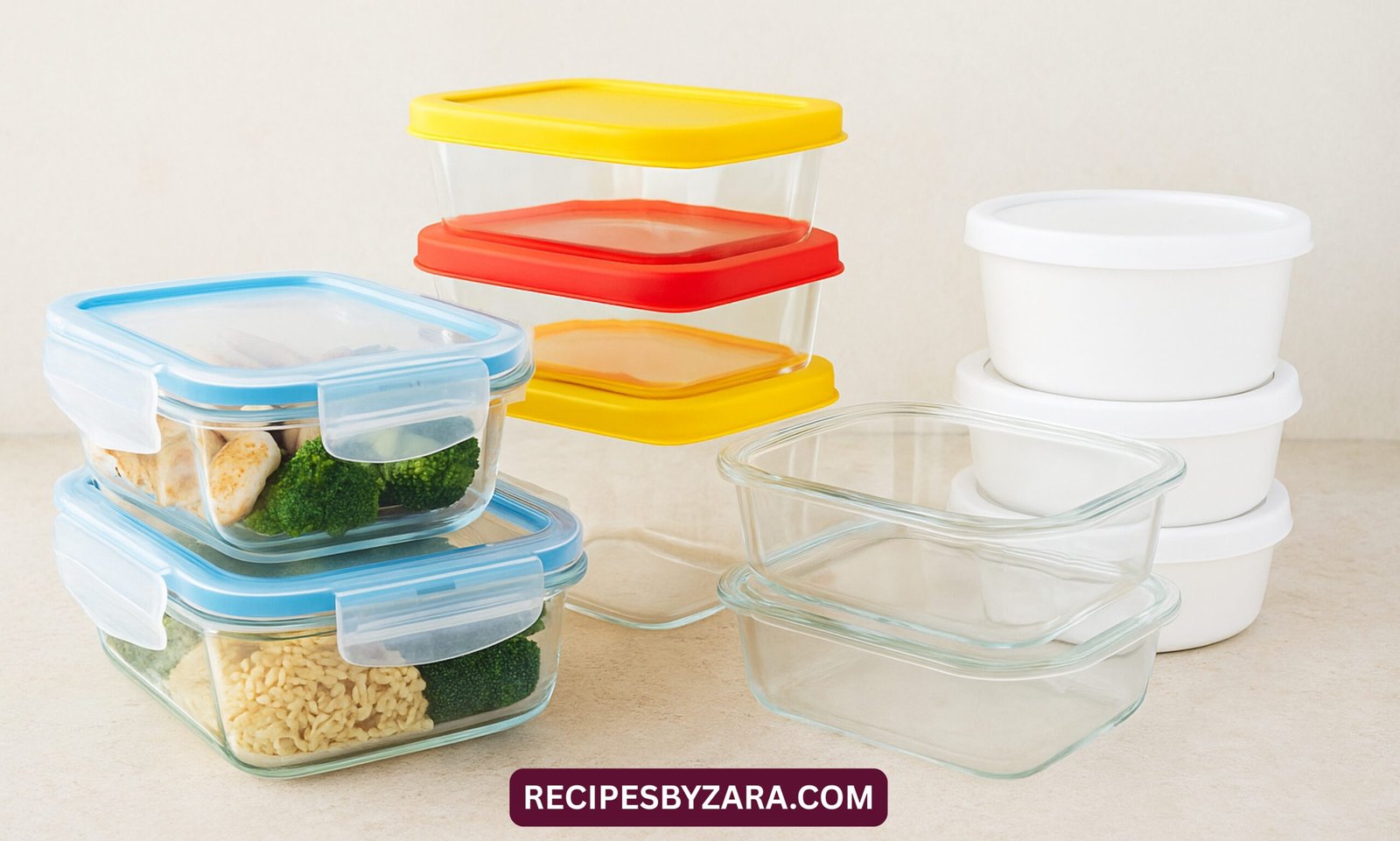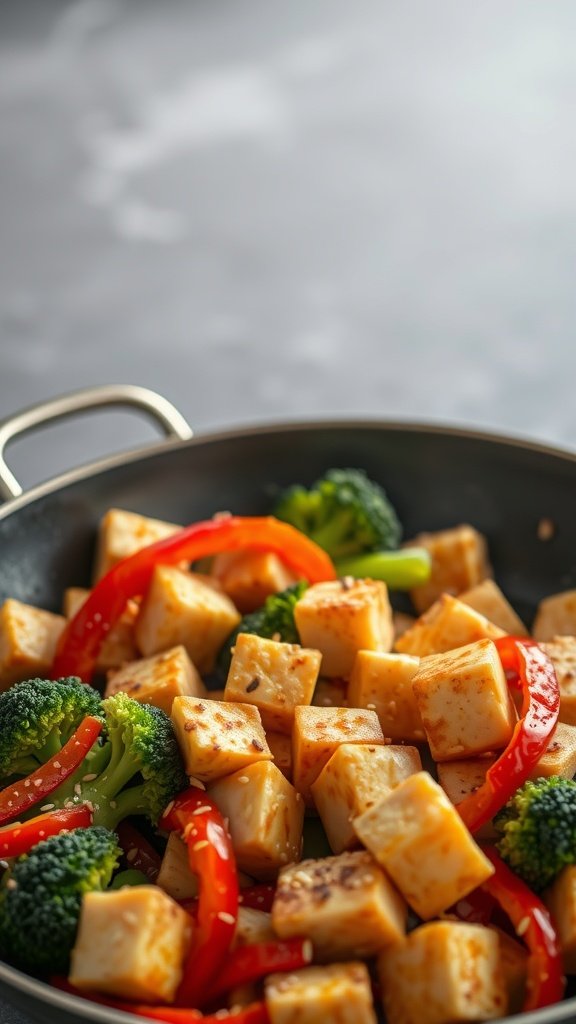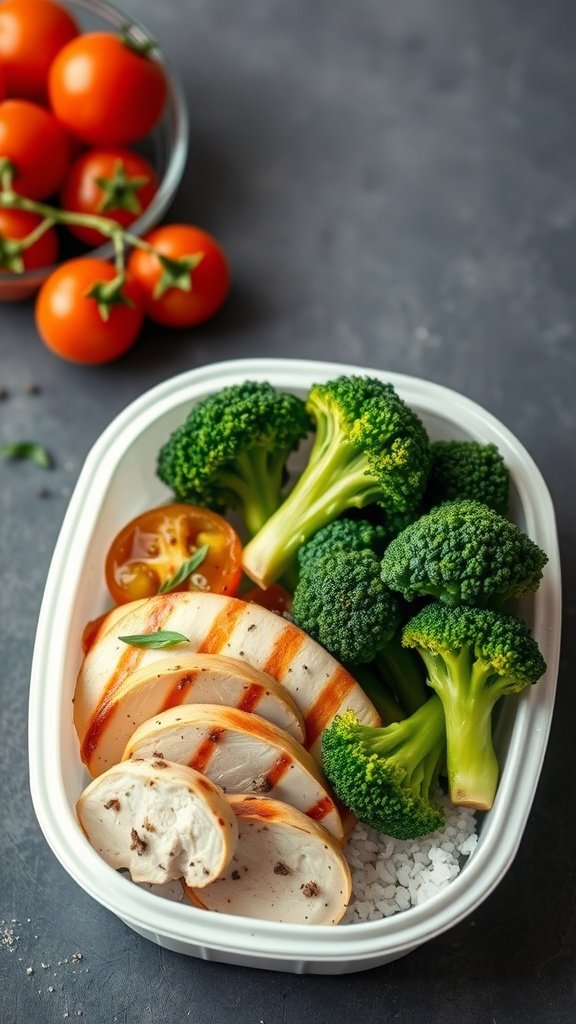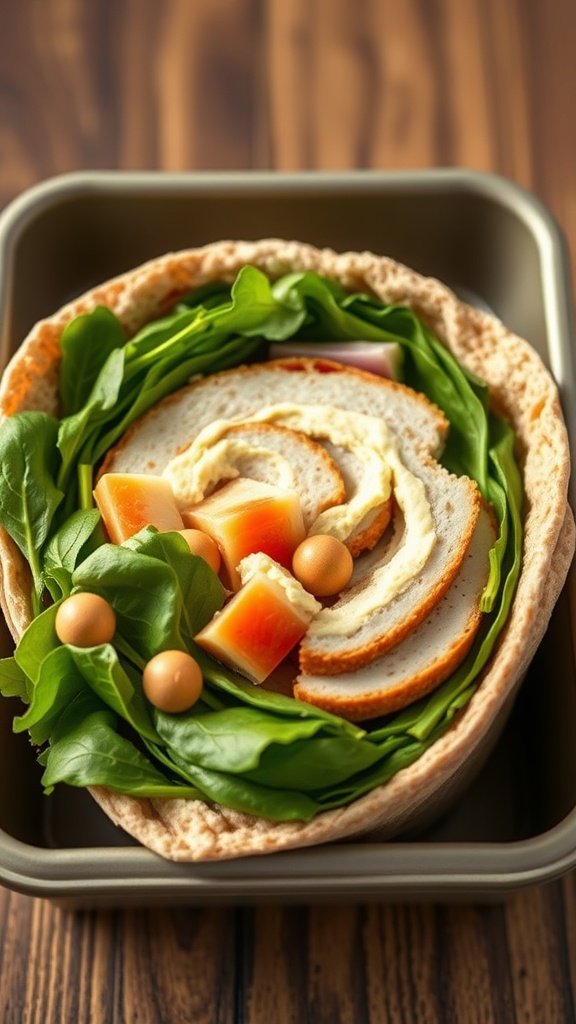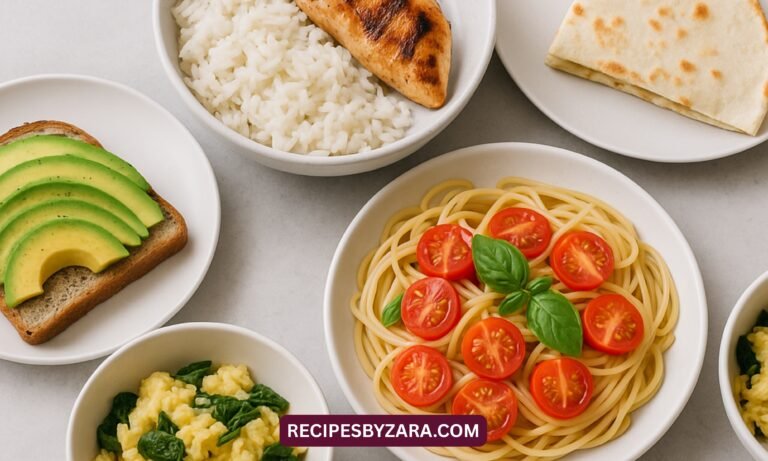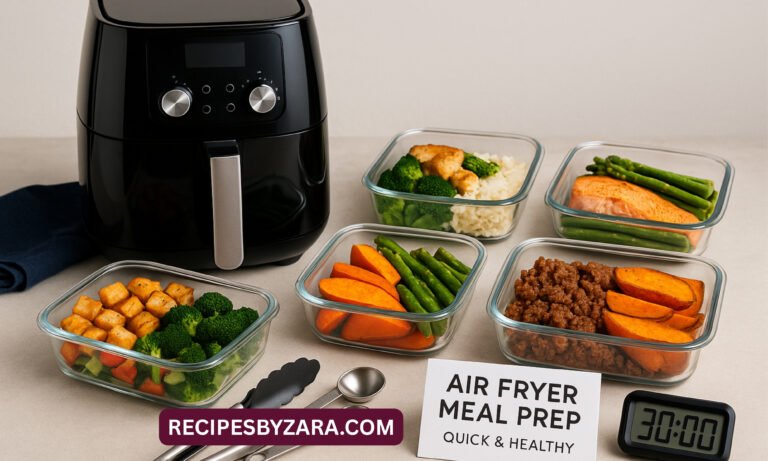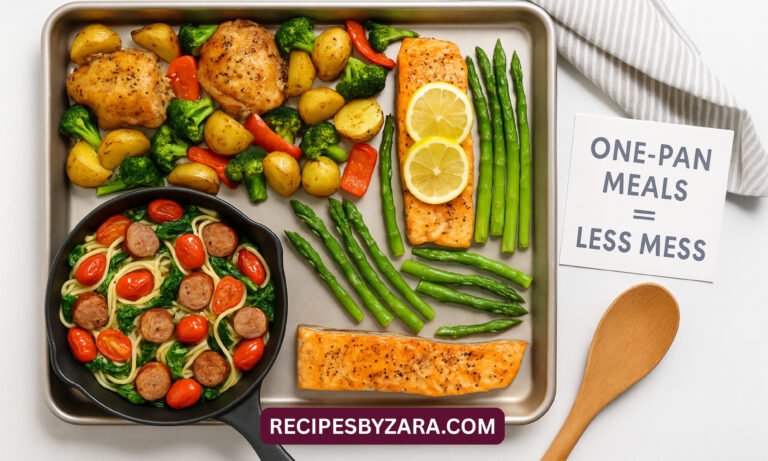Best Storage Containers for Meal Prep Keep Food Fresh Safe & Organized
Find the best storage containers for meal prep to keep your meals fresh, organized, and ready to grab. The glass, BPA-free plastic, and freezer-safe options are perfect for every lifestyle and budget.
When it comes to storage containers for meal prep, the type you choose can directly impact your food’s freshness, safety, and convenience. Containers that seal tightly prevent leaks, retain flavor, and keep meals fresher for longer. Investing in high-quality containers ensures that all your meal prep efforts don’t go to waste.
Cheap or flimsy containers may warp in the microwave or crack in the freezer. They can also absorb odors or stains, making them unsuitable for long-term use. This is why BPA-free containers and freezer-safe containers are recommended for consistent results. Your meal prep system is only as good as your storage.
1. Why Choosing the Right Storage Containers Matters
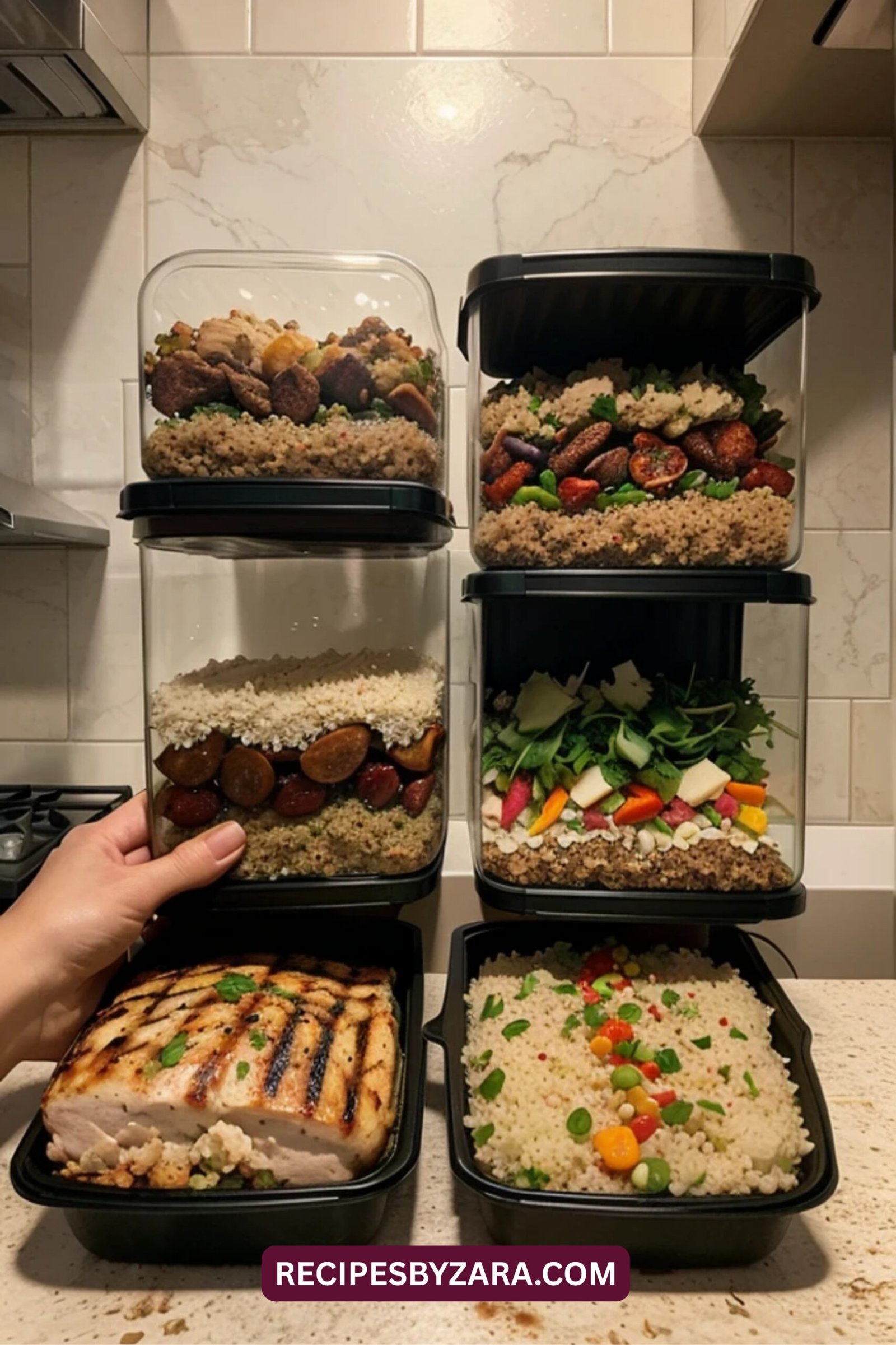
Containers with proper compartments can support portion control, a key part of any healthy eating or weight loss plan.
Whether you’re tracking calories, macros, or simply trying to reduce overeating, having pre-portioned meals ready in secure containers makes staying on track easier.
Meal prep isn’t just about cooking ahead, it’s about planning, storing, and serving smartly.
The right meal prep containers support your goals, whether you’re following a specific diet, prepping for a family, or packing lunches for work. It’s the small details like this that make meal prep effective.
2. Glass vs. Plastic Containers: Pros and Cons
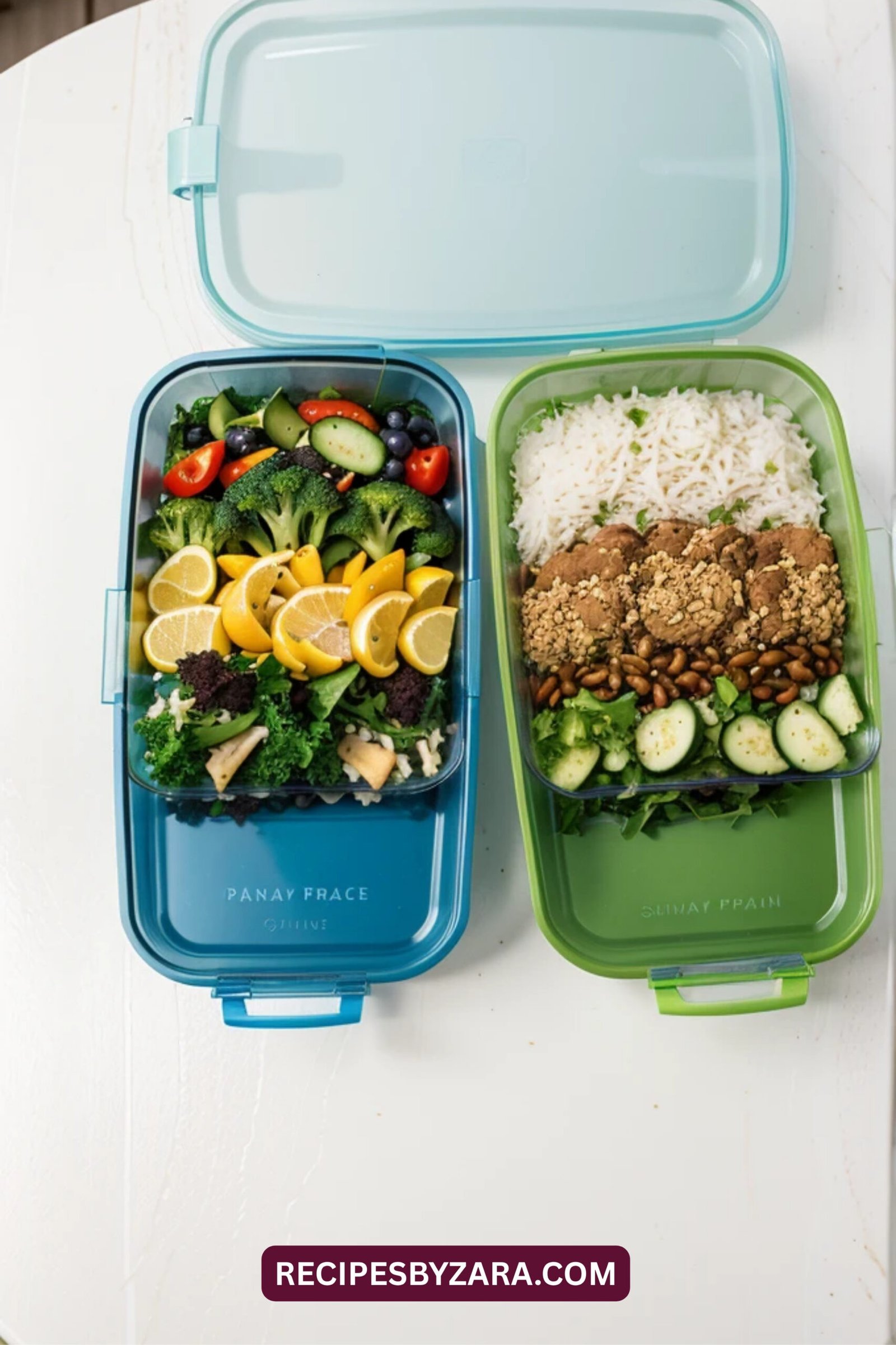
Glass containers are often seen as the gold standard among storage containers for meal prep. They are non-toxic, don’t stain, and handle temperature changes better than plastic. They can go from freezer to oven to table, making them incredibly versatile and long-lasting.
However, glass is heavier and more breakable than plastic. For on-the-go meals, like packed lunches, some people prefer lighter options. This is where BPA-free plastic containers shine. They’re durable, lightweight, and often stackable, which is great for fridge space.
The downside of plastic is its potential to retain odors and stain from certain foods, especially tomato sauces or spices. If you’re using plastic, ensure it’s microwave-safe, dishwasher-safe, and freezer-safe. Look for those labeled as food grade or certified BPA-free.
Many meal preppers prefer using a combination of both. Glass containers work well for home storage and reheating meals safely, while plastic options are ideal for travel or school lunches. The balance depends on your lifestyle and storage preferences.
3. Must-Have Features in Meal Prep Containers
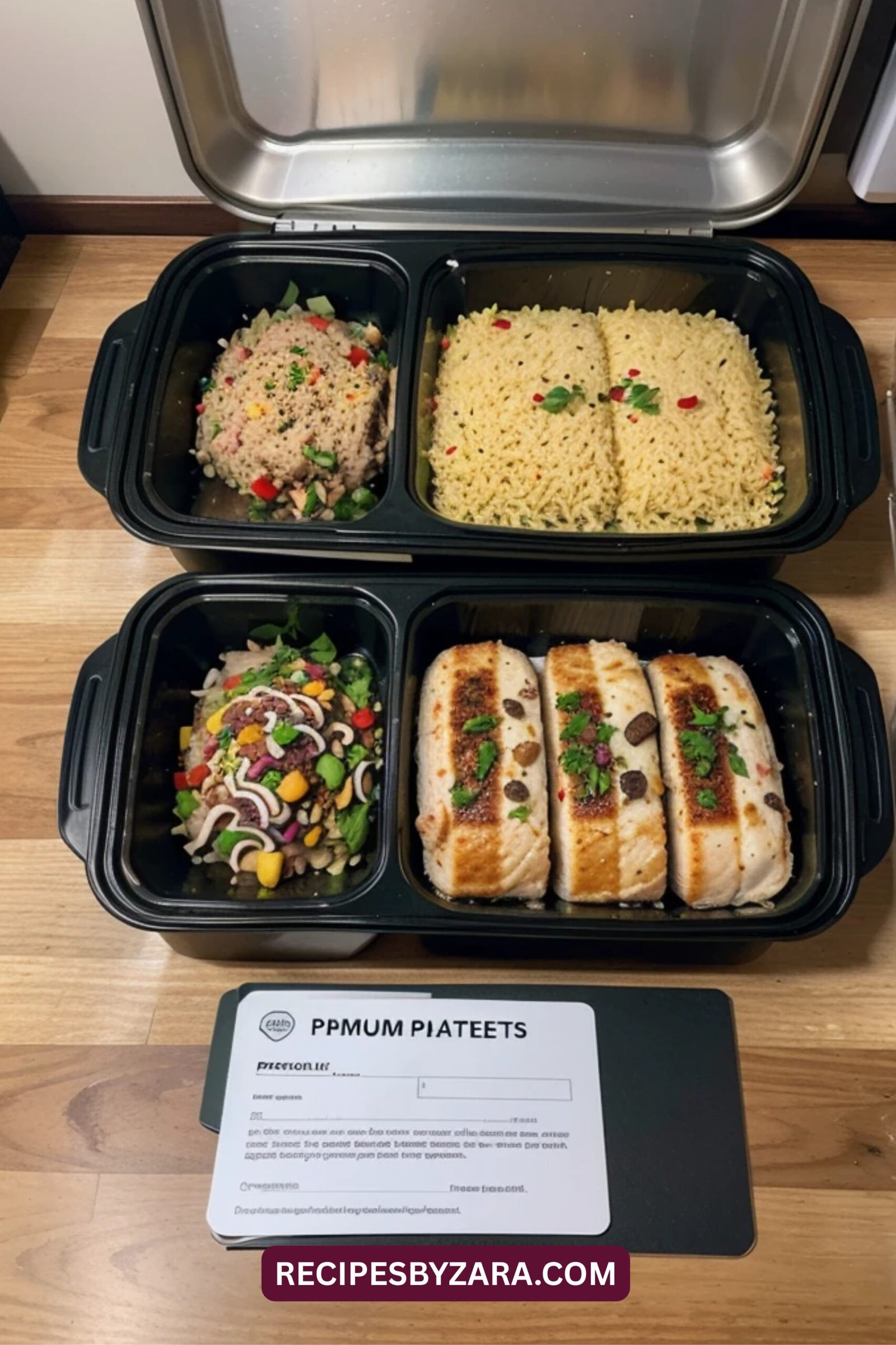
The best storage containers for meal prep have a few key features in common. First, they offer airtight seals. This helps keep meals fresh, prevents leaks, and minimizes exposure to air that can lead to spoilage. Silicone-lined lids with locking mechanisms are best.
Second, look for containers with portioned compartments. These are perfect for balanced meals, allowing you to separate protein, carbs, and veggies. Divided trays help control portions without the need to use multiple dishes, especially useful for low calorie meal prep.
Stackability is another must-have. Choose containers that nest or stack easily in your fridge, freezer, or lunch bag. This helps keep your kitchen organized and maximizes space. It also makes batch cooking and freezer meal prep more manageable.
Finally, opt for containers that are dishwasher-safe, microwave-safe, and freezer-safe. These features streamline your prep, cooking, storage, and cleanup routine. Time saved in cleaning and reheating adds up, making the whole process more efficient.
4. Best Glass Containers for Meal Prep
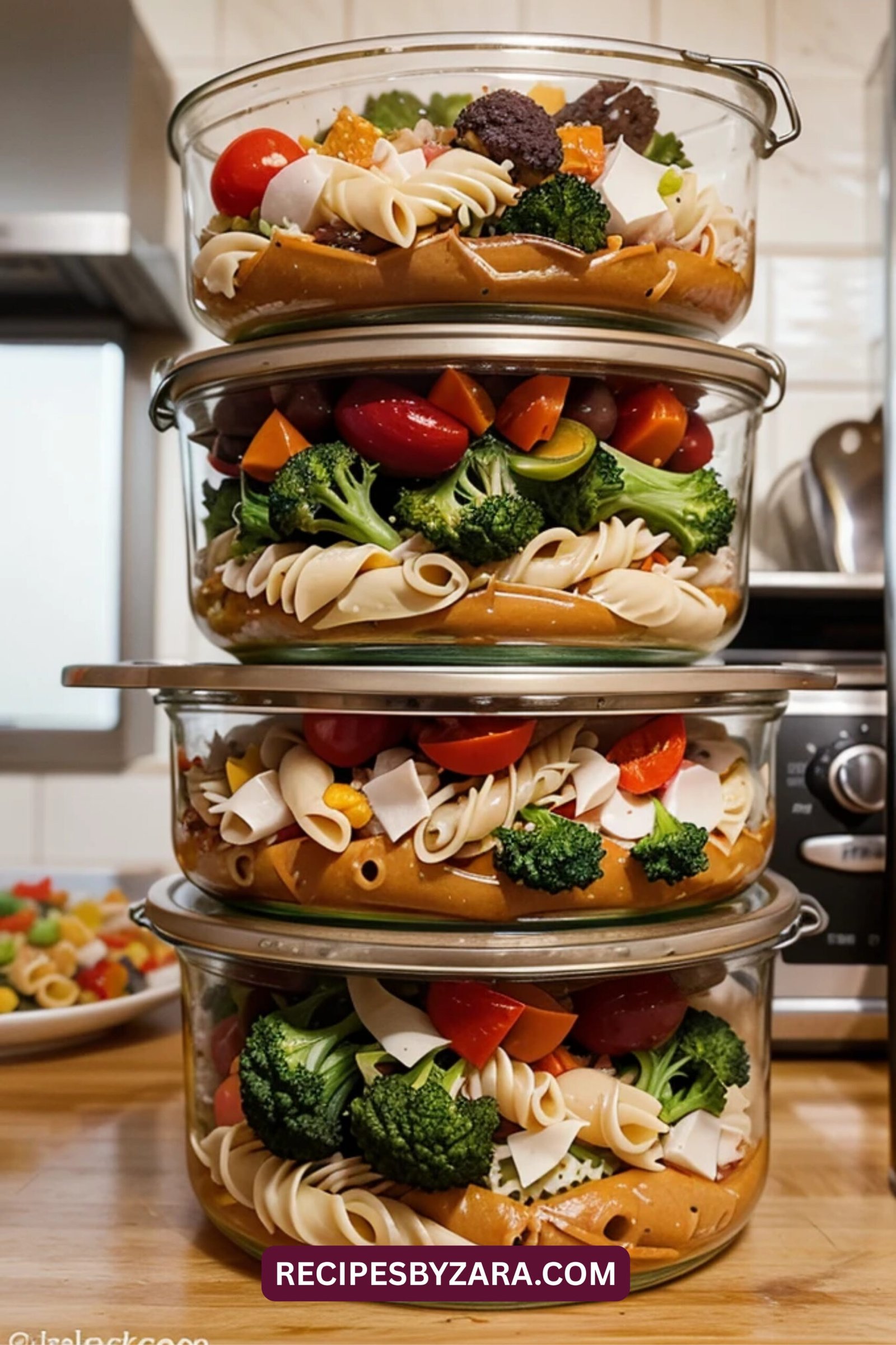
Glass containers are ideal if you’re looking for durability and eco-friendliness in your meal prep storage system. Brands like Pyrex, Glasslock, and Prep Naturals offer high-quality options with leak-proof lids and oven-safe bases. These are perfect for healthy meal prep routines.
They don’t absorb odors or discolor, which makes them suitable for strong-flavored dishes like curries, chili, or pasta sauces. This helps preserve both freshness and flavor. Plus, they’re easy to clean even if stubborn grease doesn’t stick to high-quality glass meal prep containers.
Most glass containers are microwave and oven safe (without lids), giving you flexibility for reheating. This makes them ideal for single-serve freezer meals, since you can cook once, freeze, and reheat directly. Their transparency also lets you see contents at a glance.
Despite being heavier, glass containers are worth the investment if you frequently prep meals at home. They’re reusable, long-lasting, and ideal for people focused on clean eating, avoiding toxins, or simply wanting a more sustainable meal prep setup.
5. Top BPA-Free Plastic Containers for On-the-Go Meals
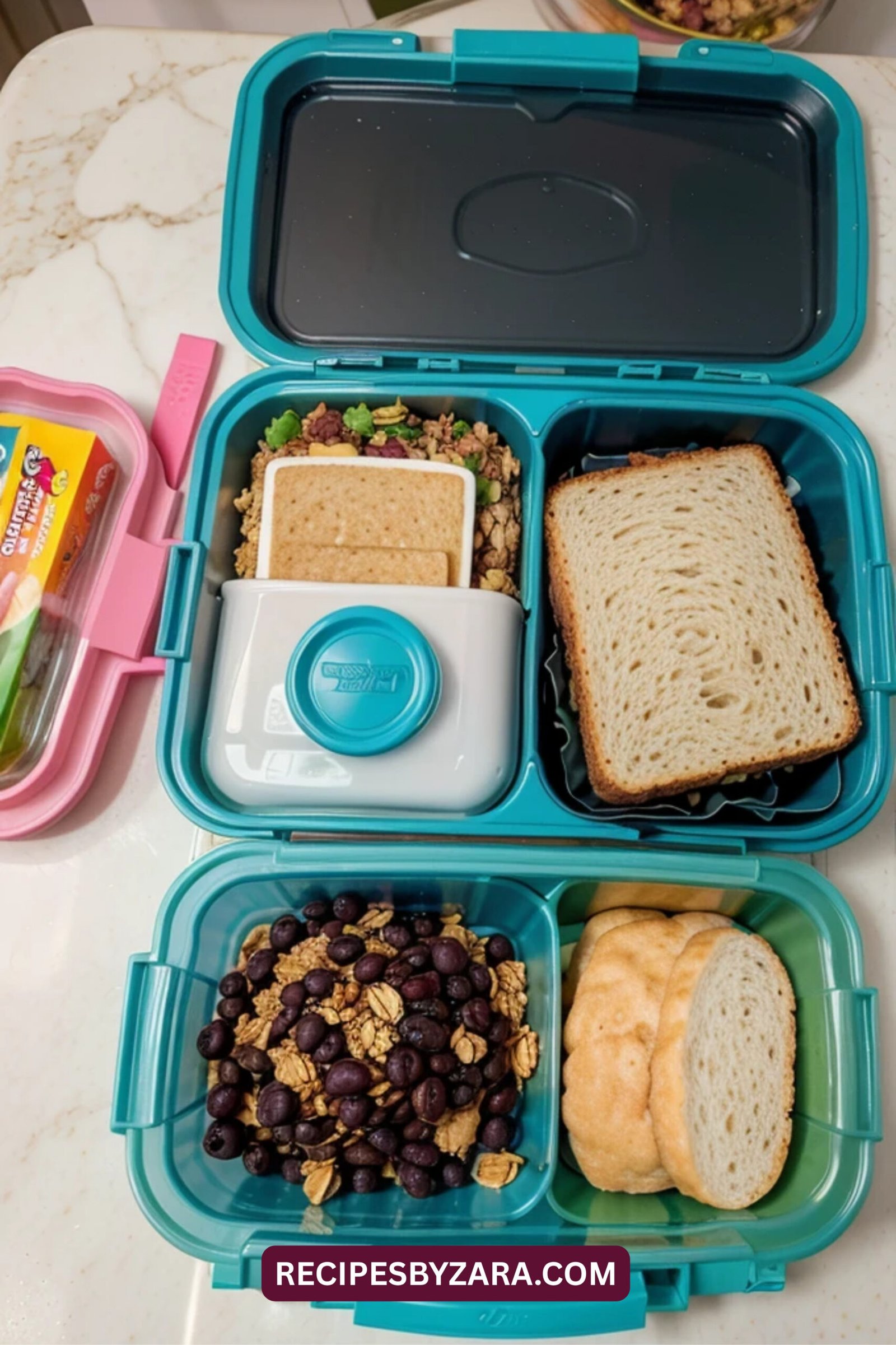
For those needing portability, BPA-free plastic containers are the go-to choice. They’re lighter than glass, less fragile, and often come in compact sizes. Brands like Rubbermaid, Sistema, and Bentgo make reliable options with tight-sealing lids and compartmental layouts.
Plastic containers are ideal for lunch prep for work, school lunchboxes, or gym bag meals. They’re especially convenient when portioning out multiple meals for the week. Their stackable design makes them space-efficient for both fridge and bag storage.
While not all plastic holds up in the microwave or dishwasher, high-quality BPA-free options are built for regular use. Look for containers labeled as microwave-safe and top-rack dishwasher safe to keep your prep routine hassle-free and efficient.
Although plastic containers won’t last as long as glass, they’re a practical and affordable option for meal preppers on a budget. If you’re looking for budget meal prep tools, starting with a set of good plastic containers can be a great first step.
6. Best Containers for Freezer Meal Prep
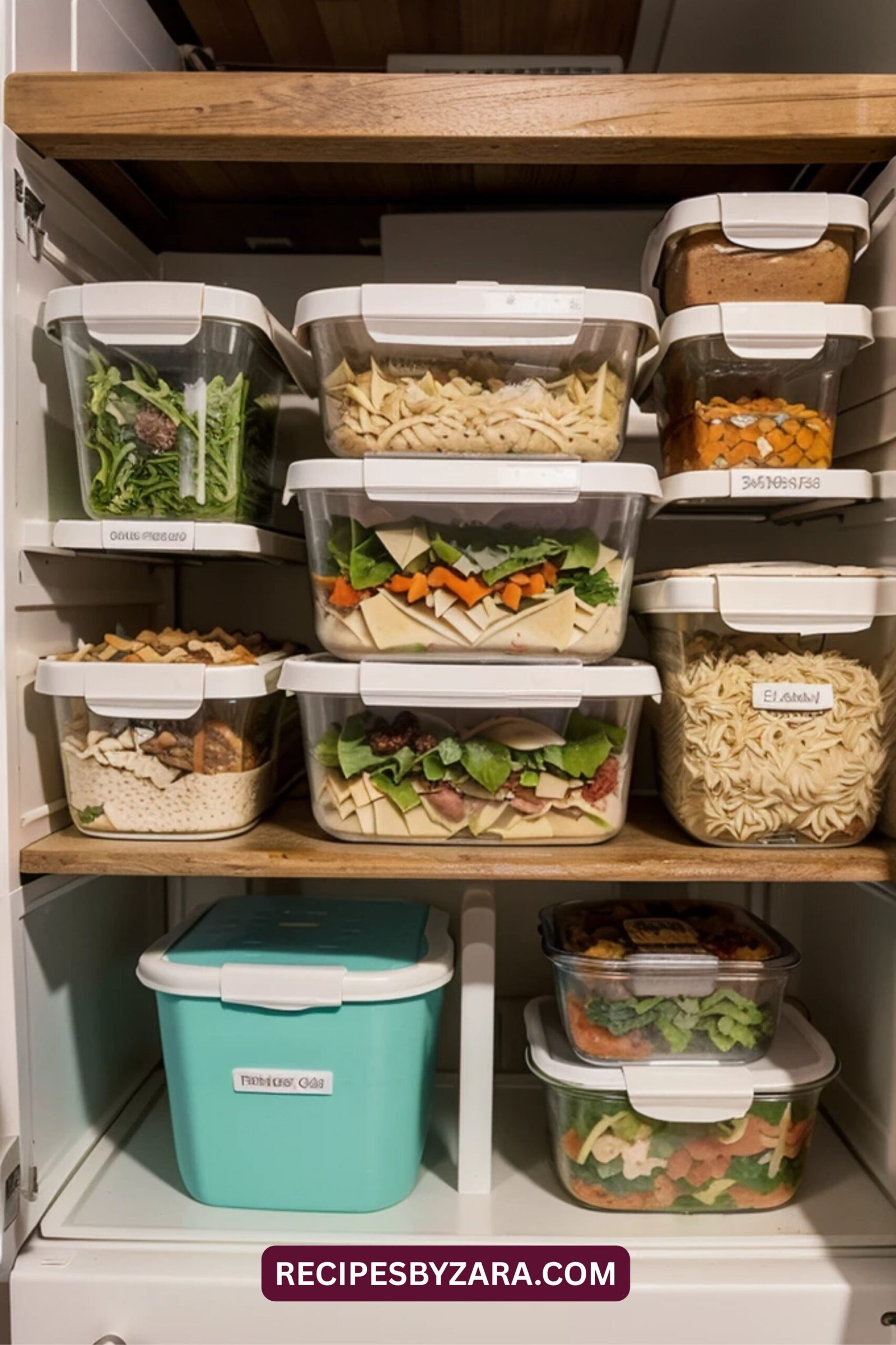
Freezer-safe containers are essential when you’re prepping meals in bulk. Whether it’s soup, stews, casseroles, or smoothies, you need containers that can withstand low temperatures without cracking or warping. Choose options clearly labeled for freezer use.
Glass containers with thick walls are great for freezing as long as you leave space for food to expand. For liquids, wide-mouth mason jars can work well too. Always cool foods before freezing to prevent condensation and freezer burn.
Plastic containers designed for the freezer are usually more flexible, making them easy to stack and label. These are useful for freezer meal prep, especially when prepping large quantities of batch-cooked meals like pasta bakes or chili.
Vacuum-seal bags and silicone freezer bags are another option. They save space and allow for flat freezing, ideal for stackable storage. Label everything with date and contents to keep track of shelf life and avoid wasted food in your meal prep cycle.
7. Portion Control and Meal Tracking with Containers
![]()
The right storage containers for meal prep support more than convenience; they help you manage nutrition goals. Containers with built-in compartments or pre-measured capacities make portion control easy and accurate, reducing the need for scales or guesswork.
If you’re counting calories, tracking macros, or trying to build muscle, portion-controlled containers can be a game-changer. They help eliminate mindless eating and keep you aware of your serving sizes, especially when following high protein or low carb meal prep plans.
For weight loss goals, use containers that match your calorie targets per meal. For example, a 3-compartment container can hold a balanced 400–500 calorie lunch with protein, fiber, and healthy fats. Color-coded sets can also help identify meals by time of day.
Pair your containers with digital food journal apps to log meals quickly. Meal prep becomes more effective when you can track, measure, and adjust your intake in real-time. Having visible, portioned meals waiting in the fridge keeps you aligned with your nutrition strategy.
8. Organizing Your Fridge and Kitchen with Meal Prep Containers
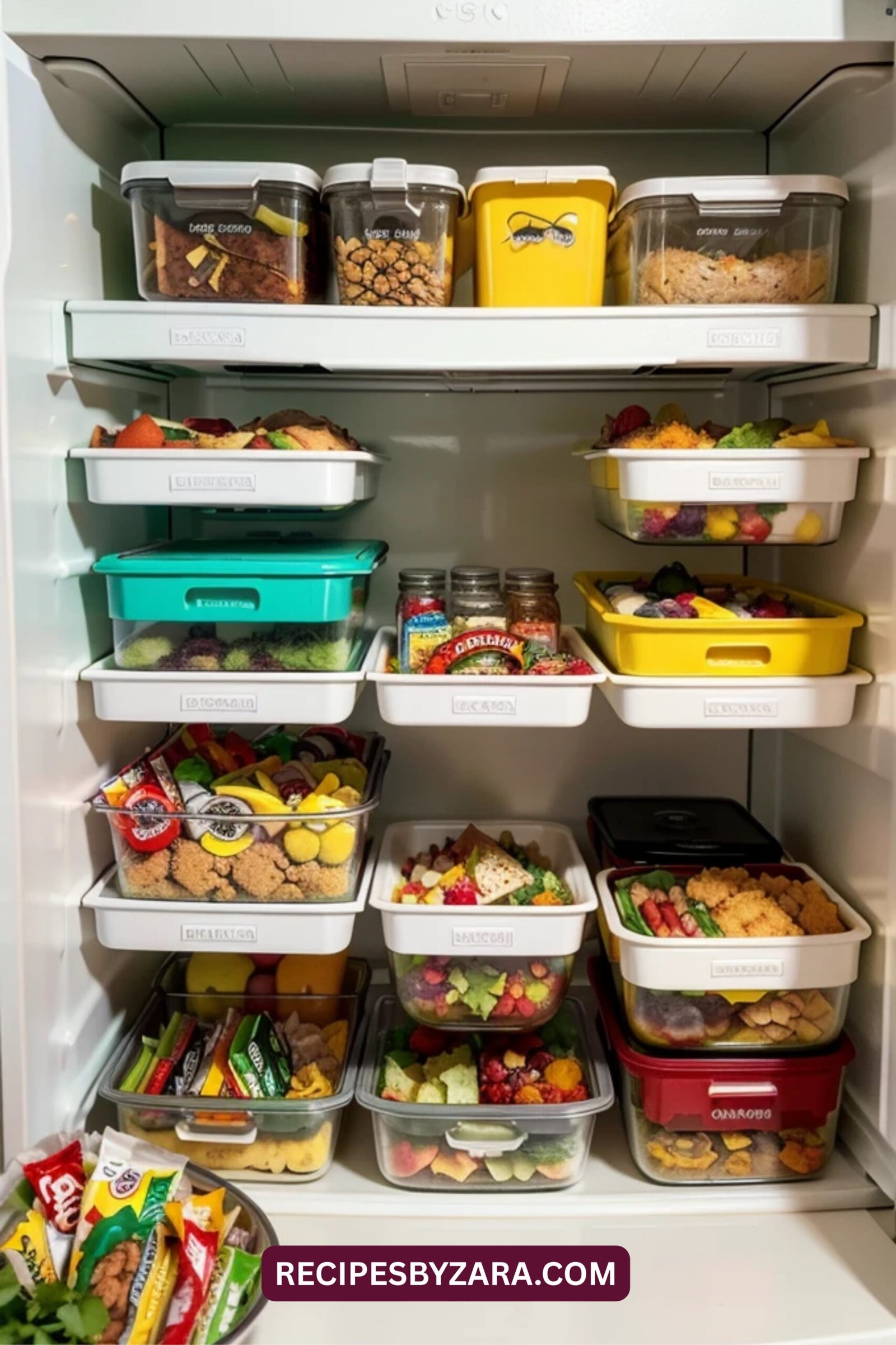
Good organization maximizes the benefits of meal prep containers. Start by clearing space in your fridge or freezer and designate areas for breakfast, lunch, and dinner containers. This avoids food clutter and makes it easy to grab meals throughout the week.
Use stackable containers to maximize shelf space. Transparent lids or color labels help quickly identify what’s inside. Keeping similar foods grouped together helps with inventory management and prevents forgotten meals from going to waste.
Weekly meal prep works better when paired with an organization plan. Place meals that need to be eaten first near the front. Use a whiteboard or app to track meals by day and stay accountable to your eating schedule.
Label containers with meal names, prep dates, and calorie or macro info if needed. This is especially useful for family meal prep, helping everyone stay on track and ensuring dietary goals are met. A tidy fridge supports a healthier lifestyle overall.
FAQs
Q1. Can I microwave all meal prep containers?
Not all containers are microwave-safe. Always check labels. Glass containers without lids and BPA-free plastic containers labeled “microwave-safe” are usually fine. Avoid microwaving containers that warp or lack microwave-safe certification.
Q2. How many containers do I need for weekly meal prep?
It depends on your routine. A basic set includes 10–15 containers for 3 meals a day over 5 days. Consider more if you prep snacks, smoothies, or family-sized portions.
Q3. Are silicone containers good for meal prep?
Yes, silicone containers are flexible, lightweight, and freezer-safe. They’re especially good for baking, snacks, or freezing liquids. Some are collapsible, saving storage space.
Q4. What are the best containers for soup and liquids?
Use wide-mouth mason jars or tall glass containers with tight lids. Freezer-safe plastic jars or silicone bags also work. Always leave headspace to avoid cracking from liquid expansion.
Q5. How do I prevent my containers from staining?
Avoid storing tomato-based or heavily spiced foods in plastic. Use glass containers for these dishes. Washing immediately after use and avoiding reheating in plastic can also help prevent staining.
